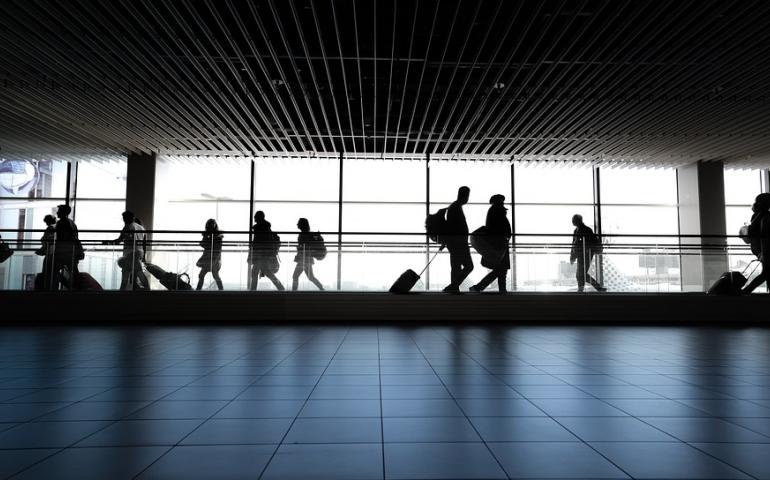
Certainly, the global pandemic was not a predictable event back in 2019, but it has accelerated many of the foreseeable changes we expected in the future. Many of the changes observed in 2020 will very likely stay in 2021 and beyond including focused segmentation and demand stimulation strategies that both official tourism boards and travel and tourism businesses are implementing.
However, the key question is by when and how the tourism industry will recover? Or, as some think, will COVID-19 change the way people travel and do tourism forever? While indicators showed that travel demand was growing and hospitality businesses were picking up last summer, largely due to leisure travelers, nobody can predict what the future holds. This is especially so as we face new lockdowns in Europe as well as new strains of the virus that increase anxieties around travel booking and consumer confidence, all compounded by the lack of coordinated response among countries and governments.
Recently OAG a data company that provides one of the world's most comprehensive air travel database and MIDAS aviation a consulting firm that specializes in aviation and tourism, launched a Tourism Restart and Recovery Plan online course aim that those working in travel and tourism industry around the world. We have the opportunity to talk to one of its instructor René Armas Maes VP Commercial and Regional Partner at MIDAS Aviation.
Q1: The latest report from the United Nations World Tourism Organization suggests the global tourism industry will take two to four years to recover, and that recovery may only begin in Q3 of 2021. More worrying is that around 20% of its experts suggest that the rebound will not happen until 2022 due to the major obstacles the tourism industry is facing. Why it is important for governments, official tourism boards and associations, Destination Management Organizations, tourism entities and other players in the tourism ecosystem to participate in this online 6 hrs. course?
A: There are many obstacles ahead for the tourism and travel industry from how to segment the market and stimulate demand to repositioning a brand for future growth, preserving liquidity and containing costs to stay afloat to name a few of them. Therefore, players in the tourism industry need to revise their strategies and expect a number of restart and setbacks while they find the best formula to strengthen bookings and incentivize demand. In addition, this course will provide participants with key tools and the essential guidance to understand the key pillars of a successful tourism restart and recovery plan.
Q2: Can you expand on those key pillars of a successful tourism restart and recovery plan?
A: They are eight pillars that travel, and tourism businesses need to consider to properly execute a sound strategic and recovery plan. They are rebalancing priorities and budget reformulation, the use of data and analytics tools, focused segmentation, demand stimulation, the use of marketing communications and how to reposition a brand. Moreover, the importance of alliances and partnerships even with competitors, stakeholder collaboration throughout the end-to-end travel chain and lastly the use of technology, why innovating is important and up and re-skilling the workforce.
Q3: Interesting, I think that other players in the air transportation ecosystem such as airlines and airport commonly use data to understand market dynamics and opportunities. However, I am not aware to what extend and how for example an official tourism board or a Destination Management Company may use market intelligence data. Can you explain?
A: A number of data set need to be used to understand market dynamics and to position a destination offer in country A on top of another destination in country B. Therefore, airline schedules, booking activity, average fares and load factor information in addition to travel sentiment and intent to book are key data sets. In addition, a number of analysis should be executed including country and route competitive analysis and airfare comparison analysis among others. Furthermore, a tourism data dashboard covering key performance indicators can supply key insight into market and route dynamics as well as to identify potential opportunities and challenges that will need to be addressed in a tourism and demand recovery plan.
Q4: Upon completion of this course, what would participants have learned or gain from it?
A: Using a combination of theory, global examples and case studies, participants will learn key strategies to successfully segment the market in the new normal era including more than 12 domestic and 14 international strategies in addition to how to stimulate demand and what are the key considerations to reopen a destination while rebuilding travel and customer confidence. Moreover, how both public stakeholders and the private sector can collaborate to rebuild demand faster from fiscal incentives and holidays vouchers to marketing and communications partnerships to name a few.
Q5: Can you give an example of such collaboration between a government and a private sector?
A: One example is when a government through its tourism boards execute financial incentives and a joint communicational campaign at provincial, domestic, regional and international levels to rebuild bookings and demand in consultation with the private sector. For example, the government of Thailand is one key example. The end goal is to brings all players together (government, official tourism board and the private sector) in order to develop a sound multi-step and multi sector tourism and demand recovery strategy. Likewise, to assist travel and tourism business to quickly restructure their businesses while staying afloat.
To get more information about this Tourism Restart and Recovery Plan, please visit www.midasaviation.com and click on training section or you can email René through his LinkedIn page.









Facebook comments